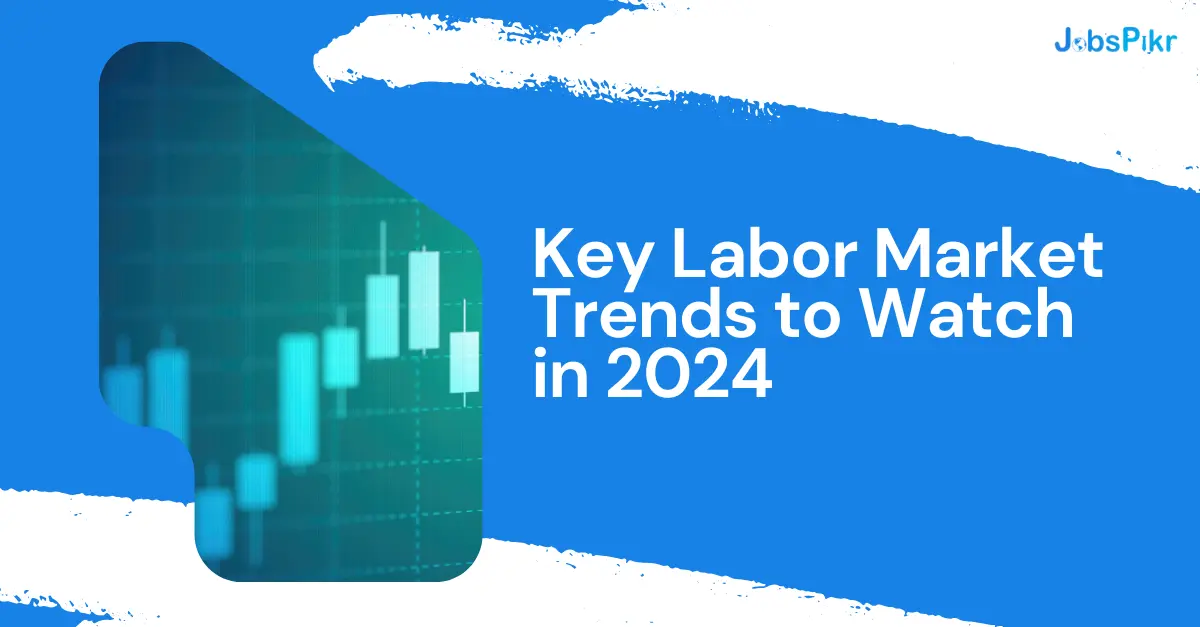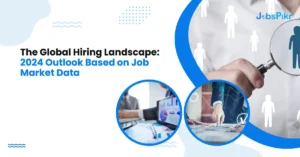Considering that the 2024 labor market is expected to undergo significant changes due to persistent technology development, modified socio-economic aspects, and heightened emphasis on remote work and staff wellness – how can various stakeholders effectively adapt to these transformations?
Well, those involved in the job market will have to accommodate an ever-changing landscape driven by persistent technology improvements, sociological-economical modifications, and expanding interest in distant workplaces and staff wellness. Anticipating around 47% of jobs potentially being automated by 2030, enterprises should emphasize formulating resilient methods for handling tomorrow’s employees.
Concurrently, workers will look for careers with versatility, significance, and learning potential as they traverse the mutating occupation terrain. Moreover, escalating globalization and population fluctuations introduce additional layers to the competent workforce, stressing the importance for associated parties to recognize such influences when preparing for the future of professions.
Technological Advancements Shaping Employment
Automation and Robotics: Numerous industries are adopting automated systems, thereby decreasing the demand for repetitive manual jobs while increasing the requirement for specialized workers.
Artificial Intelligence (AI): The implementation of AI technologies is taking on intricate responsibilities, resulting in emerging careers centered around AI oversight, creation, and moral regulation.
Remote Working Technologies: The rise of digital collaboration tools is supporting continued remote work, influencing job location and structure.
Green Technologies: As eco-friendly innovations grow, they create jobs in renewable energy sectors, sustainability planning, and environmental compliance.
Blockchain: With increasing adoption in finance, logistics, and contracts, blockchain is generating niche employment opportunities for specialists.
Technological abilities have become crucial, highlighting the importance of ongoing education and flexibility for current workers.
The Rise of Remote Work: From Trend to Norm
Image Source: https://www.forbes.com/
The labor market has undergone a significant shift due to remote work, transitioning from a rare advantage to a widely accepted norm. In 2024, both employers and employees consider remote work as a fundamental component of job arrangements, with several key factors propelling this transformation:
- Technological advancements have simplified collaboration and communication across distances, making remote work more viable.
- Employee demand for work-life balance has resulted in a greater call for flexible working situations.
- Global talent access has encouraged companies to broaden their search for skilled professionals beyond local geographies.
- Sustainability initiatives promote remote work to reduce carbon footprints associated with commuting and office maintenance.
- Pandemic-induced shifts proved that many jobs could be performed effectively outside traditional office settings, leading to permanent adoption.
Artificial Intelligence and Automation: Job Displacement or Creation?
Image Source: https://jobmarketmonitor.com/
The modern work environment stands on the precipice of a significant transformation, driven by relentless technological progress. Artificial Intelligence (AI) and automation introduce substantial changes throughout numerous industries, especially those with positions featuring monotonous chores and predictable patterns.
Despite these difficulties, such technological advances have given rise to novel career possibilities in areas including but not limited to AI creation, data examination, and system regulation. Assessing the overall effect on employment remains a matter of extensive discussion, yet discernible trends are beginning to surface:
- Automation is phasing out some low-skill jobs, resulting in increased demand for retraining programs.
- AI is generating roles that require advanced digital literacy, spurring educational reforms to prepare the workforce.
- The quality and accessibility of retraining and educational programs are pivotal in determining whether displacement will be outweighed by job creation.
The Skills Gap Analysis: Bridging Education with Industry Needs
Image Source: https://www.jobspikr.com/
The labor market in 2024 reflects a persistent skills gap. Industries often report a shortage of adequately trained workers to fill specialized roles. Skills gap analysis emerges as a critical bridge:
- Assessment of Needs: Employers pinpoint specific skill deficiencies hindering productivity.
- Customized Education Programs: Academic institutions develop targeted curricula in direct response.
- Continuous Learning: On-the-job retraining and upskilling become integral to worker development.
- Collaborative Efforts: Partnerships between businesses and schools ensure relevance and effectiveness.
By aligning educational output with market demands, workers gain relevancy, and industries enjoy a competitive workforce.
The Gig Economy: Challenging Traditional Employment Models
The gig economy continues to expand, fundamentally altering the traditional employment landscape. Workers now seek flexible, short-term jobs instead of longstanding, full-time positions. This shift is powered by digital platforms that connect freelancers with gigs instantaneously.
Companies benefit from lower overheads by utilizing independent contractors, while workers embrace the autonomy and variety of freelancing. However, this model raises questions about job security, benefits, and labor rights, pressing policymakers to consider new frameworks to protect gig workers.
Green Jobs: The Growth of Eco-Friendly Careers
The labor market is increasingly influenced by the global push for sustainability. In 2024, eco-friendly careers are witnessing significant growth as both private and public sectors prioritize environmental responsibility. The surge in green jobs can be observed in various industries, including:
- Renewable energy (solar, wind, and hydroelectric power)
- Sustainable agriculture and organic farming
- Waste reduction and recycling initiatives
- Green construction and sustainable architecture
- Environmental consulting and policy development
- Conservation and wildlife management
Employers now prioritize hiring professionals with both expertise and a profound comprehension of environmental effects and sustainable practices. This growing preference for “green jobs” indicates a job market that appreciates and integrates ecological considerations with economic progress.
Demographic Shifts: Aging Populations, Millennials and GenZ in the Workplace
Labor market dynamics are evolving with significant demographic shifts. By 2024, aging populations in developed nations will impact labor availability, pressing organizations to adopt more age-inclusive practices and potentially automate roles. Millennials will constitute a significant portion of leadership roles, reshaping workplace cultures with an emphasis on flexibility, purpose, and technological fluency.
- Generation Z (GenZ), the “digital natives”, will continue entering the workforce, bringing a fresh perspective, innovative ideas, and a strong predisposition towards technology and social responsibility.
- Collaboration between diverse age groups will be key, as the exchange of knowledge and skills becomes essential to staying competitive.
- Employers must focus on cross-generational mentoring programs, fostering an environment where experience meets innovation.
- Retaining talent across all generations will necessitate personalized career paths, upskilling opportunities, and a deeper understanding of varying motivational drivers.
Mental Health and Wellbeing: Prioritizing the Human Element at Work
Image Source: https://hrexecutive.com/a-dire-situation-employees-mental-healthcare-needs-are-soaring-again/
The importance of employee mental health to organizational success is becoming widely recognized by businesses in 2024. Firms are establishing comprehensive wellness initiatives that include mental health days, counseling services, and stress reduction sessions. These companies understand that contented employees are more productive and are therefore adopting a more extensive perspective on staff benefits.
Emphasizing mental health as a crucial element of their corporate identity enables these organizations to better support their workers while simultaneously improving overall effectiveness and boosting their appeal to top-tier candidates. In today’s competitive job market, prioritizing mental wellbeing significantly impacts both employment decisions and business reputation.
Diversity and Inclusion: From Buzzwords to Business Imperatives
As the landscape of labor markets changes, diversity and inclusion (D&I) have shifted from being trendy terms to critical components of business strategy. Organizations now understand that having a varied workforce goes beyond taking an ethical position; it also provides them with a competitive edge. Given the increasing body of research that links D&I to enhanced performance, innovation, and decision-making skills, companies are ramping up their initiatives to prioritize and promote:
- Attract candidates from varied backgrounds
- Create inclusive cultures for innovation to thrive
- Implement equitable hiring practices
- Provide diversity training and development opportunities
These actions are not just for appearances – businesses eager to excel are making D&I central to their strategic plans.
Here’s a Podcast Episode from JobsPikr’s Industry Forum on Global Perspectives on DEI: How DEI Initiatives Vary Across Different Regions and Cultures that might interest you!
The Role of Big Data in Talent Acquisition and Retention Strategies
Big Data has become an indispensable ally for companies in the art of talent acquisition and retention. Here’s how:
- Strategic Recruitment: Employers now leverage job data analytics to identify patterns and predict candidate success, ensuring a more strategic and informed hiring process.
- Personalized Experience: Big Data enables a personalized approach in engaging potential hires, tailoring communications, and benefits to align with individual preferences.
- Performance Prediction: Predictive analytics assist in foreseeing future employee performance and fit, reducing turnover by securing more compatible hires.
- Retention Analysis: By examining trends and employee feedback, businesses can enact data-driven retention strategies, curbing attrition rates.
- Skill Gap Identification: Data analysis tools help in pinpointing skill gaps within an organization, guiding targeted training programs and internal career development.
Utilizing Big Data in these ways helps companies shape a robust workforce tailored to their dynamic needs and the competitive landscapes of 2024.
Conclusion
The ability to adapt is crucial for both companies and workers in the rapidly changing labor market of the future. Focusing on ongoing education and developing new skills will help prepare everyone for technological progress. Companies need to adopt versatile working conditions and varied recruitment approaches.
On the other hand, individuals should enhance their interpersonal abilities like innovation and troubleshooting to stay relevant in the job market. Through foresight and active preparation, all parties involved can effectively manage upcoming shifts in the employment landscape.




